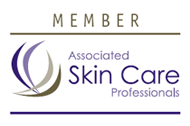Benefits Of Skin Care Therapies
- Why should I see an esthetician?
- What’s the difference between dermatology, cosmetology, and esthetics?
- Techniques and products
- Visiting an esthetician
- What about home care?
- Your esthetician
Why should I see an esthetician?
Esthetics involves a range of skin treatments aimed at promoting skin health and vitality. Estheticians specialize in skin wellness, assisting their clients in balancing oil and moisture levels to achieve a youthful, healthy complexion. They offer various facial treatments, each detailed further below.
These treatments and products are designed to shield the skin from environmental damage while addressing issues like fine lines, wrinkles, and uneven skin tone. Estheticians are adept at treating skin conditions including acne, rosacea, eczema, and dry skin. Beyond these benefits, skin care treatments offer a relaxing and rejuvenating experience. For those aspiring to have smooth and healthy skin, consulting a skin care professional can be greatly advantageous.
What’s the difference between dermatology, cosmetology, and esthetics?
Dermatology is a medical field where licensed physicians specialize in skin disorders. Esthetic practices are distinct in that they do not include diagnosis, prescription, or any treatments requiring a medical license. If a client is under the care of a dermatologist, an esthetician can offer complementary and supportive therapies. Estheticians are also trained to identify early signs of various medical conditions affecting the skin and will refer clients to a dermatologist if necessary.
Cosmetology encompasses a range of beauty treatments, including care for nails, hair styling, makeup application, and skin care. Esthetics is a subset of cosmetology, and some estheticians extend their expertise to other cosmetology areas beyond skin care.
Techniques and products
Estheticians employ various techniques, such as facial steaming, exfoliation, waxing, pore cleansing, extractions, and chemical peels. They use a range of products including creams, lotions, wraps, and masks made of clay, gel, or other materials, as well as salt scrubs. Additionally, they often utilize specialized equipment to enhance the effectiveness of their high-tech services.
Some common therapies:
- Chemical Peel: Exfoliation through chemical peels is highly effective for a variety of skin issues, including aging, sun damage, acne, and mild scarring, and it can enhance skin brightness and even out skin tone. The intensity of peels varies: light, moderate, and deep. Light peels typically involve no downtime, allowing immediate return to everyday activities. Moderate peels may require a day or two of recovery time. Deep peels, which can necessitate a week or more for complete skin healing, are administered by or under the supervision of a physician to ensure safety. Estheticians in non-medical settings are qualified to perform only light to moderate peels.
- Exfoliation: Exfoliation involves eliminating dead skin cells through various methods. This can be achieved manually, using techniques like scrubbing or brushing, or through systems like hydro-dermabrasion. Alternatively, chemical peels, which promote the shedding of dead skin cells, or enzymatic products that break down and digest these cells, can also be used for exfoliation.
- Extraction: This process involves thorough cleansing of pores, achieved either manually through gloved hands and gentle pressure to clear impacted pores, or by using a specialized metal extraction implement designed for unblocking pores. Additionally, it may include the use of a lancet, a small sharp blade, to lift dead skin cells before the extraction process.
- Facial: A facial, a highly sought-after treatment by estheticians, serves as an excellent initial evaluation of your skin before progressing to more intensive treatments. Typically, a facial encompasses removal of makeup, cleansing of the skin, exfoliation (which can be mechanical, enzymatic, or chemical), application of steam, extraction of impurities, facial massage, application of a specialized treatment mask, and the use of serum, moisturizer, and sunblock. While the general recommendation is to have facials every four weeks, your therapist might suggest a tailored schedule to better suit your unique skin requirements.
- *:
Visiting an esthetician
Scheduling a consultation before your initial treatment, especially for those new to esthetic procedures, is highly advisable. This allows you and your therapist to discuss your objectives and expectations for the first session, as well as long-term goals. During the consultation, your therapist will conduct a thorough intake form to gather essential information. This enables the therapist to tailor an individualized treatment plan, encompassing a series of professional treatments and recommendations for at-home product use.
What about home care?
The effectiveness of maintaining visible improvements post-treatment largely hinges on consistent and proper home care. Your esthetician is skilled in choosing products that will best enhance your skin and can guide you on how to sustain your professional results between visits. Similar to adhering to routines in medical or dental care, following the appropriate daily regimen at home is crucial to maximizing the benefits of your professional esthetic treatments.
Your Esthetician
Ensure your skin care treatments are administered by a well-trained professional. Feel free to inquire about your skin care therapist's background, training, and experience. All therapists are professional members of Associated Skin Care Professionals, validating that they meet their state's licensing credentials and core training requirements. Additionally, they commit to a code of ethics, ensuring responsible and respectful treatment for clients.


